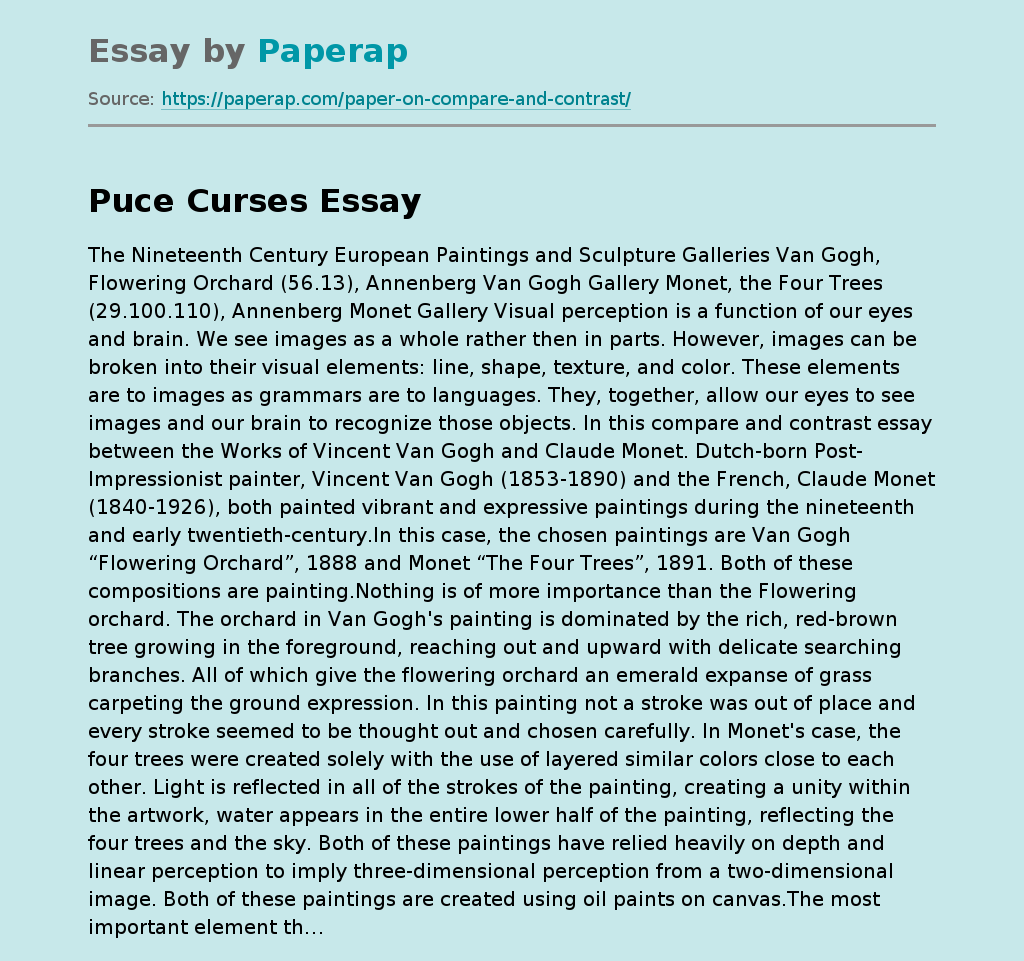"Flowering Orchard", "The Four Trees"
The following example essay on “Flowering Orchard, The Four Trees” compares the paintings are Van Gogh “Flowering Orchard”, 1888 and Monet “The Four Trees”, 1891.
The Nineteenth Century European Paintings and Sculpture Galleries Van Gogh, Flowering Orchard (56.13), Annenberg Van Gogh Gallery Monet, the Four Trees (29.100.110), Annenberg Monet Gallery Visual perception is a function of our eyes and brain. We see images as a whole rather then in parts.
However, images can be broken into their visual elements: line, shape, texture, and color. These elements are to images as grammars are to languages.
They, together, allow our eyes to see images and our brain to recognize those objects. In this compare and contrast essay between the Works of Vincent Van Gogh and Claude Monet. Dutch-born Post-Impressionist painter, Vincent Van Gogh (1853-1890) and the French, Claude Monet (1840-1926), both painted vibrant and expressive paintings during the nineteenth and early twentieth-century.
Both of these compositions are painting.Nothing is of more importance than the Flowering orchard.
The orchard in Van Gogh’s painting is dominated by the rich, red-brown tree growing in the foreground, reaching out and upward with delicate searching branches. All of which give the flowering orchard an emerald expanse of grass carpeting the ground expression.
In this painting not a stroke was out of place and every stroke seemed to be thought out and chosen carefully. In Monet’s case, the four trees were created solely with the use of layered similar colors close to each other. Light is reflected in all of the strokes of the painting, creating a unity within the artwork, water appears in the entire lower half of the painting, reflecting the four trees and the sky.
Both of these paintings have relied heavily on depth and linear perception to imply three-dimensional perception from a two-dimensional image. Both of these paintings are created using oil paints on canvas.
"Flowering Orchard", "The Four Trees". (2019, Dec 05). Retrieved from https://paperap.com/paper-on-compare-and-contrast/

